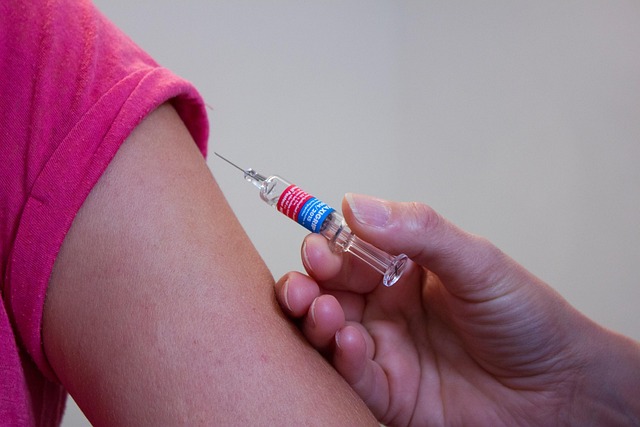Key Signs of Ischemic Stroke and When to Get Help
Recognizing the warning signs of an ischemic stroke can mean the difference between life and death, or between full recovery and permanent disability. An ischemic stroke occurs when blood flow to part of the brain is blocked, typically by a blood clot, cutting off oxygen and nutrients to brain tissue. Understanding these critical symptoms empowers you to act quickly when every minute counts. Early intervention significantly improves treatment outcomes and reduces the risk of long-term complications.

What Is an Ischemic Stroke?
An ischemic stroke represents about 87% of all strokes and happens when a blood vessel supplying the brain becomes blocked or narrowed. This blockage prevents oxygen-rich blood from reaching brain cells, causing them to begin dying within minutes. The most common causes include blood clots that form in the brain’s arteries or travel from other parts of the body, such as the heart. Risk factors include high blood pressure, diabetes, heart disease, smoking, and age over 65. Unlike hemorrhagic strokes caused by bleeding, ischemic strokes respond well to clot-busting medications when treatment begins promptly.
Recognizing Ischemic Stroke Signs and Symptoms
The key signs of ischemic stroke often appear suddenly and require immediate attention. The acronym FAST helps identify the most critical symptoms: Face drooping occurs when one side of the face becomes numb or droops, creating an uneven smile. Arm weakness manifests as sudden numbness or weakness in one arm, making it difficult to raise or coordinate movement. Speech difficulty includes slurred speech, confusion, or trouble understanding others. Time emphasizes the urgency of calling emergency services immediately. Additional symptoms may include sudden severe headache, vision problems in one or both eyes, dizziness, loss of balance, or coordination problems affecting one side of the body.
Additional Warning Signs of Ischemic Stroke
Beyond the primary FAST symptoms, several other ischemic stroke signs warrant immediate medical attention. Sudden numbness or tingling, particularly on one side of the body, often indicates compromised blood flow to specific brain regions. Vision changes can include partial vision loss, double vision, or complete blindness in one eye. Cognitive symptoms may present as confusion, disorientation, memory problems, or difficulty processing information. Some patients experience sudden, severe headaches unlike any they’ve previously had. Swallowing difficulties and sudden hearing loss in one ear also signal potential stroke. Women may experience unique symptoms including sudden hiccups, nausea, chest pain, or shortness of breath alongside traditional signs.
When to Seek Emergency Help
Time is absolutely critical when dealing with ischemic stroke symptoms. Call 911 immediately if you or someone else experiences any combination of these warning signs, even if symptoms seem mild or intermittent. The treatment window for clot-busting medications is typically within 3-4.5 hours of symptom onset, though some interventions remain effective up to 24 hours. Don’t wait to see if symptoms improve or drive yourself to the hospital. Emergency medical services can begin treatment immediately and transport patients to stroke-certified facilities equipped with specialized care teams. Even if symptoms appear to resolve, seek medical evaluation as this could indicate a transient ischemic attack (TIA), often called a mini-stroke, which frequently precedes a major stroke.
Stroke Treatment Cost Considerations
Understanding stroke treatment costs helps families prepare for potential medical expenses. Emergency stroke care typically involves multiple components, each with associated costs that vary significantly based on location, insurance coverage, and treatment complexity.
| Treatment Component | Provider Type | Cost Estimation |
|---|---|---|
| Emergency Room Visit | Hospital Emergency Department | $1,200 - $3,500 |
| Clot-busting Medication (tPA) | Stroke Center | $7,000 - $13,000 |
| Brain Imaging (CT/MRI) | Hospital Radiology | $1,000 - $5,000 |
| Hospital Stay (3-7 days) | Stroke Unit | $25,000 - $75,000 |
| Rehabilitation Services | Specialized Rehab Facility | $1,500 - $3,500 per week |
Prices, rates, or cost estimates mentioned in this article are based on the latest available information but may change over time. Independent research is advised before making financial decisions.
Most insurance plans, including Medicare, cover emergency stroke treatment, though out-of-pocket costs depend on specific coverage details. Many hospitals offer financial assistance programs for qualifying patients. The cost of treating stroke complications or long-term care significantly exceeds early intervention expenses, making prompt treatment economically beneficial as well as medically crucial.
Prevention and Risk Reduction
While recognizing ischemic stroke signs remains crucial, prevention strategies significantly reduce stroke risk. Managing blood pressure through medication, diet, and exercise represents the most effective preventive measure. Controlling diabetes, maintaining healthy cholesterol levels, and quitting smoking substantially lower stroke probability. Regular physical activity, a Mediterranean-style diet rich in fruits and vegetables, and moderate alcohol consumption contribute to brain health. People with atrial fibrillation or other heart conditions may require blood-thinning medications to prevent clot formation. Regular medical checkups help identify and manage risk factors before they lead to stroke.
Recognizing the key signs of ischemic stroke and responding immediately can save lives and preserve brain function. The FAST assessment provides a simple framework for identifying critical symptoms, while understanding additional warning signs ensures comprehensive recognition. Emergency medical care within the crucial treatment window offers the best outcomes for stroke patients. Prevention through risk factor management remains equally important, but when stroke symptoms appear, immediate action takes priority over any other consideration.
This article is for informational purposes only and should not be considered medical advice. Please consult a qualified healthcare professional for personalized guidance and treatment.




